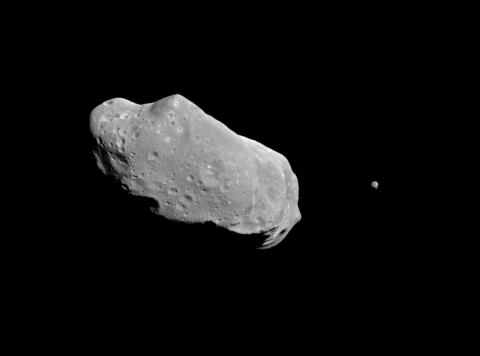Asteroids are large rocks which orbit the Sun and are too small to be planets.
They are ancient leftovers from the start of the Solar System. This means they contain the same material which built the rocky planets, such as Earth or Mars.
Astronomers have found more than one million asteroids so far. 20,000 of them have names and the rest have identifying numbers.
Image

Credit
This work
by NASA
is licensed under Creative Commons Zero v1.0 Universal
The 3 largest asteroids are more than 400 km in diameter. That is as long as the Grand Canyon! They are called Vesta, Vesta, and Hygiea.
The smallest asteroids are only tens of metres across. We think there are millions more asteroids, but they are too small to detect using telescopes. If you added up the mass of each asteroid, the total would be less than the mass of the Moon.
